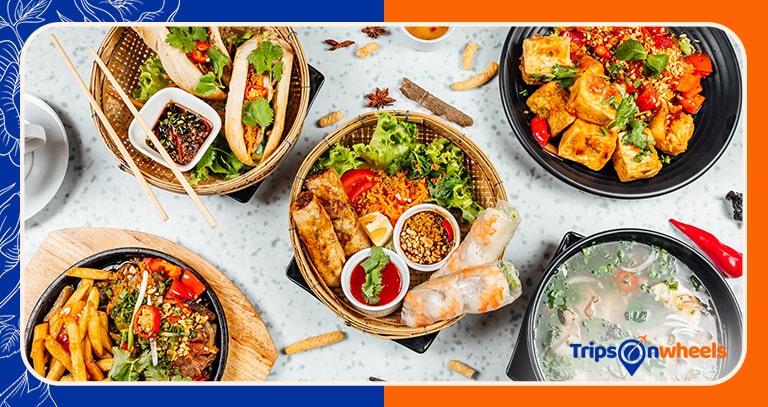Vietnamese cuisine is a vibrant tapestry of flavors, textures, and colors, renowned for its balance of sweet, salty, sour, and spicy elements. From the bustling streets of Hanoi to the serene landscapes of the Mekong Delta, each region contributes its unique twist to the country’s culinary heritage. In this article, we will embark on a gastronomic exploration of traditional Vietnamese dishes, highlighting their cultural significance and offering tips on how to prepare these delightful recipes at home.
Vietnamese Stir-Fried Vegetables: A Healthy and Flavorful Delight
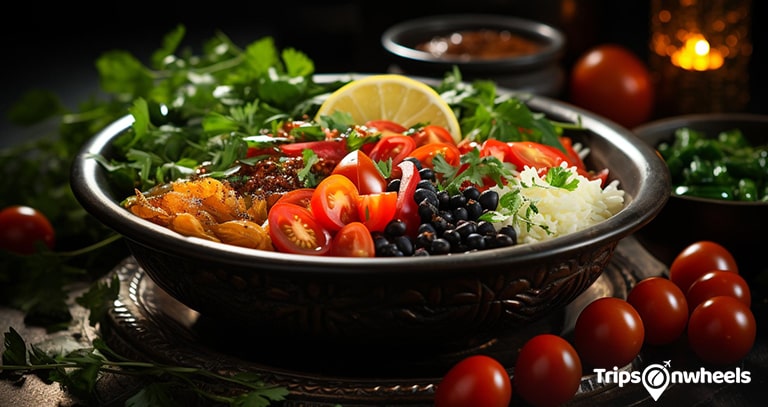
Stir-frying is a popular cooking method in Vietnamese cuisine, known for preserving the crispness and nutrients of vegetables. Vietnamese stir-fried vegetables often feature a mix of colorful vegetables like bell peppers, carrots, snow peas, and bok choy, tossed in a light sauce made from soy sauce, garlic, and ginger. This dish is not only a staple in Vietnamese households but also a testament to the cuisine’s emphasis on fresh, healthy ingredients.
Furthermore, Vietnamese stir-fried vegetables are not only delicious but also incredibly easy to prepare. With just a few simple ingredients and a hot wok or frying pan, you can create a vibrant and flavorful dish in minutes. The key is to cook the vegetables quickly over high heat, ensuring they retain their crunch and vibrant colors. This cooking technique, combined with the aromatic flavors of garlic and ginger, makes Vietnamese stir-fried vegetables a must-try for anyone looking to explore the rich and diverse world of Vietnamese cuisine.
The Quintessential Vietnamese Staple Food: Rice
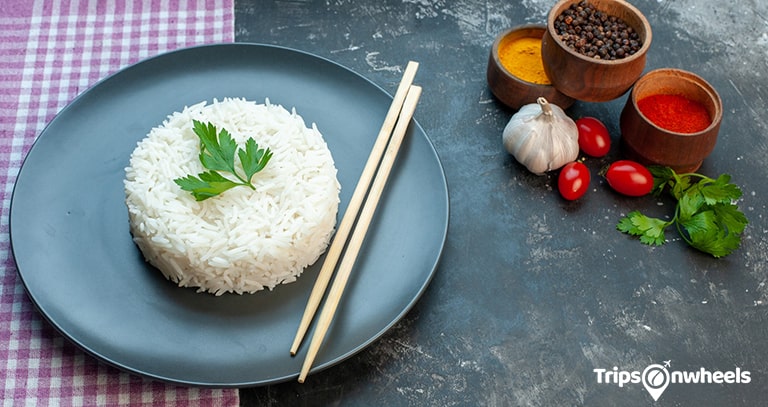
Rice is the cornerstone of Vietnamese cuisine, serving as the foundation for many iconic dishes. Whether it’s the classic broken rice plate (Cơm Tấm) served with grilled pork and pickled vegetables or the beloved Vietnamese pork chop rice, rice is an integral part of the Vietnamese culinary experience. It’s not just about the rice itself but how it’s paired with other ingredients to create a harmonious and satisfying meal.
The broken rice plate is a staple in southern Vietnam, featuring small, fragmented rice grains that have a unique texture and flavor. This dish is often accompanied by marinated grilled pork, a fried egg, and a mixture of pickled vegetables, providing a perfect balance of flavors and textures. On the other hand, Vietnamese pork chop rice is a popular dish across the country, known for its succulent pork chops marinated in a blend of spices and served over a bed of fluffy rice.
Savoring the Richness of Vietnamese Pork Belly and Egg
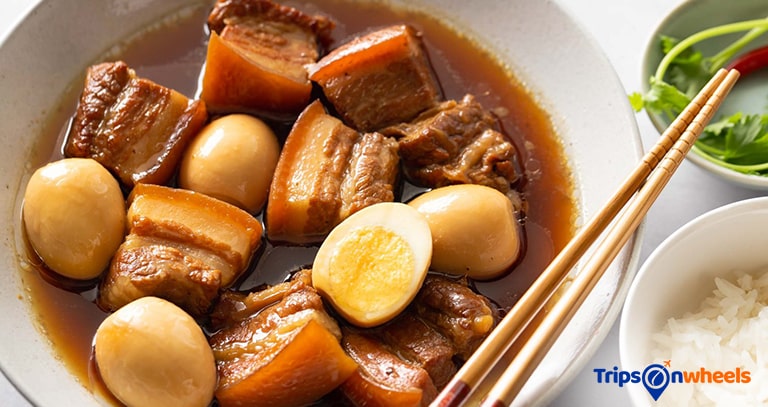
A comforting and hearty dish, Vietnamese pork belly and egg (Thịt Kho Tàu) is a beloved comfort food. Slow-cooked pork belly is simmered in a caramelized sauce with hard-boiled eggs, creating a rich and savory flavor profile. This dish is often enjoyed during Lunar New Year celebrations and family gatherings, symbolizing prosperity and togetherness.
The preparation of Vietnamese pork belly and egg involves braising the pork in a mixture of fish sauce, sugar, and coconut water, which results in a tender and flavorful meat that melts in your mouth. The addition of hard-boiled eggs soaked in the same sauce adds an extra layer of texture and taste, making Vietnamese pork belly and egg a truly indulgent experience. This dish is typically served with rice, allowing the grains to soak up the delicious sauce and complement the richness of the pork and eggs.
In Vietnamese culture, Vietnamese pork belly and egg is not just a meal but a symbol of familial warmth and unity. Its presence on the dinner table during special occasions is a reminder of the importance of sharing good food with loved ones. Whether enjoyed as a festive treat or a comforting weekday dinner, Vietnamese pork belly and egg remains a cherished staple in Vietnamese cuisine.
Vietnamese Egg Pancake: A Street Food Favorite
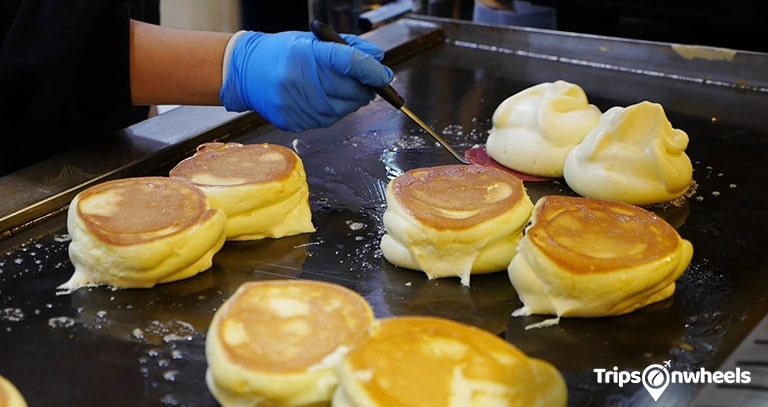
The Vietnamese egg pancake (Bánh Xèo) is a crispy, savory crepe filled with ingredients like shrimp, pork, bean sprouts, and herbs. The pancake’s name, which means “sizzling cake,” refers to the sound it makes when the batter hits the hot skillet. This dish is a street food favorite, showcasing the cuisine’s ability to transform simple ingredients into a delightful and interactive eating experience.
When preparing Vietnamese egg pancake, the key is to achieve a thin, crispy crust while maintaining a flavorful and moist filling. The batter is typically made from rice flour, coconut milk, and turmeric, giving the pancake its signature yellow color. The fillings can vary, but a combination of shrimp, pork, and bean sprouts is traditional. Fresh herbs such as mint, cilantro, and basil are added for a burst of freshness, enhancing the overall flavor profile of the Vietnamese egg pancake.
Serving Vietnamese egg pancake is an art in itself. It is usually cut into pieces and wrapped in lettuce leaves or rice paper, then dipped in a tangy fish sauce-based dipping sauce. This interactive way of eating not only adds a crunchy texture but also allows diners to customize each bite to their liking. The Vietnamese egg pancake is a perfect example of the balance and harmony that defines Vietnamese cuisine, making it a must-try for anyone exploring the country’s rich culinary traditions.
Exploring Vietnamese Dishes to Cook at Home
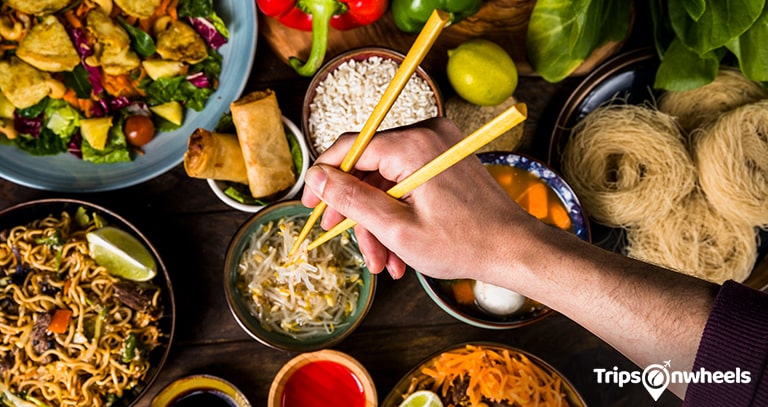
Vietnamese cuisine offers a wide array of dishes that are not only delicious but also simple to prepare at home. From the comforting Vietnamese chicken bun (Bún Gà) to the flavorful Vietnamese pork meatloaf (Chả Lụa), there are endless possibilities for home cooks to explore. These dishes provide a glimpse into the diverse culinary landscape of Vietnam, where each recipe tells a story of tradition, innovation, and the love of good food.
Vietnamese chicken bun (Bún Gà) is a light and refreshing noodle dish, perfect for a quick lunch or dinner. It features tender slices of chicken served over rice vermicelli noodles, accompanied by fresh herbs, crisp vegetables, and a tangy dipping sauce. This dish is a great way to experience the balance of flavors that is characteristic of Vietnamese cuisine.
On the other hand, Vietnamese pork meatloaf (Chả Lụa) is a popular ingredient in many Vietnamese dishes. Made from finely ground pork, wrapped in banana leaves, and steamed to perfection, this meatloaf has a unique texture and flavor that adds depth to any meal. Whether sliced and served with rice, or used as a filling for sandwiches and spring rolls, Vietnamese pork meatloaf (Chả Lụa) is a versatile and beloved component of Vietnamese cooking.
A Taste of the South: Southern Vietnamese Food
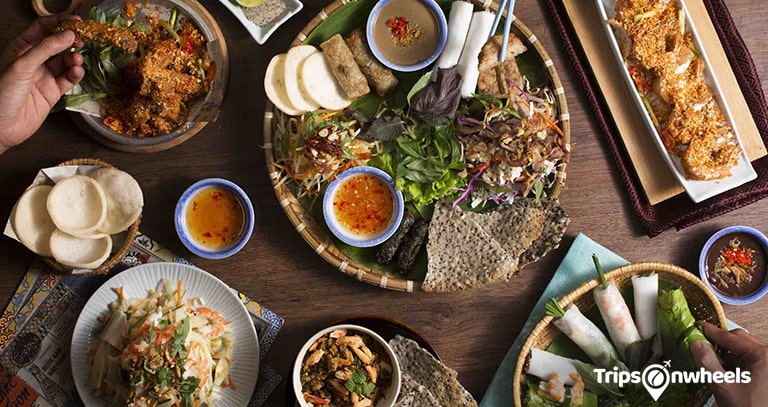
Southern Vietnamese cuisine is characterized by its sweetness and the abundant use of fresh herbs. Dishes like the Bun noodle bowl (Bún Bò Huế) and Vietnamese noodle soup dishes reflect the region’s preference for bold and aromatic flavors. The warm climate of the South also influences the food, with an emphasis on lighter, refreshing dishes that are perfect for the tropical weather.
The Bun noodle bowl (Bún Bò Huế) is a spicy and flavorful soup from the central city of Huế, which has become a favorite in the South. It features a rich broth made from beef and lemongrass, with rice noodles, thinly sliced beef, and various accompaniments like lime wedges, cilantro, and sliced onions. This dish is a perfect example of the complexity and depth of flavor that can be found in Southern Vietnamese cuisine.
Similarly, Vietnamese noodle soup dishes in the South often include a variety of seafood and are served with a generous helping of fresh herbs and vegetables. The combination of sweet, sour, and spicy flavors, along with the freshness of the herbs, makes these soups incredibly satisfying and refreshing, especially in the hot and humid climate of the region.
Vietnamese Fried Tofu: A Versatile and Delicious Ingredient
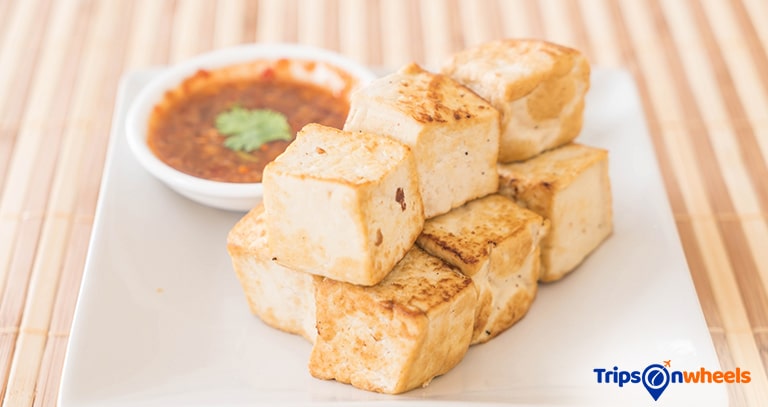
Tofu is a staple ingredient in Vietnamese cuisine, appreciated for its versatility and ability to absorb flavors. Vietnamese fried tofu is often served as a side dish or added to soups and salads. The crispy exterior and soft interior make it a delightful contrast in textures, while its mild taste allows it to pair well with a variety of sauces and spices.
One of the most popular ways to enjoy Vietnamese fried tofu is simply with a dipping sauce made of soy sauce, lime juice, and chili. This combination enhances the tofu’s subtle flavor and adds a zesty kick that makes it irresistible. Additionally, Vietnamese fried tofu can be tossed in a stir-fry with vegetables and a savory sauce, creating a satisfying and healthy meal that is both easy to prepare and delicious.
The beauty of Vietnamese fried tofu lies in its simplicity and adaptability. Whether it’s served in a traditional dish or incorporated into a modern recipe, it remains a beloved ingredient in Vietnamese cooking. Its ability to take on different flavors and textures makes Vietnamese fried tofu a versatile and essential component of the cuisine, offering endless possibilities for culinary creativity.
Indulging in Vietnamese Desserts: Tofu and Beyond
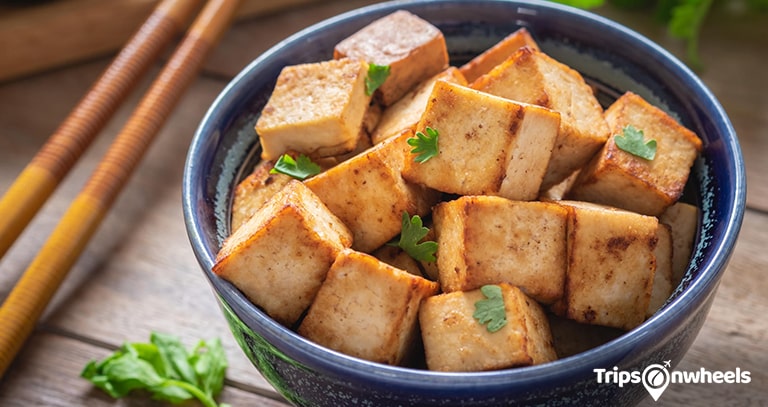
Vietnamese desserts are an essential part of the culinary landscape, offering a sweet conclusion to any meal. The Vietnamese tofu dessert (Tàu Hũ) is a popular choice, made from silky soft tofu and served with a ginger syrup. Other favorites include the Vietnamese fried roll (Chả Giò), a crispy pastry filled with sweet or savory ingredients, and the refreshing Thien An Pho House of Noodle, known for its aromatic broth and tender noodles.
The Vietnamese tofu dessert (Tàu Hũ) is a testament to the versatility of tofu in Vietnamese cuisine. This dessert is often enjoyed as a light and refreshing treat, especially during the hot summer months. The smooth texture of the tofu combined with the sweet and spicy ginger syrup creates a delightful contrast that is both satisfying and invigorating.
Conclusion
In conclusion, Vietnamese cuisine is a rich tapestry of flavors, textures, and traditions, offering an array of dishes that cater to every palate. Whether you’re a fan of hearty meat dishes, light and healthy vegetarian options, or sweet and satisfying desserts, there’s something in Vietnamese cuisine for everyone to enjoy.
For More Blog:- Travellfy

